Home › Health › Food
How Are Coffee Beans Stored – From Farm to Roasters to Cup
Published on:
Coffee beans need to be stored properly for them to be tasteful and fresh on arrival to both the coffee roasters for roasting and at home for enjoying as a brew.
This article explains how coffee beans are stored at each stage of their journey. Covering their full journey from farm to cup.
Starting from the beginning…
Contents
Coffee Cultivation
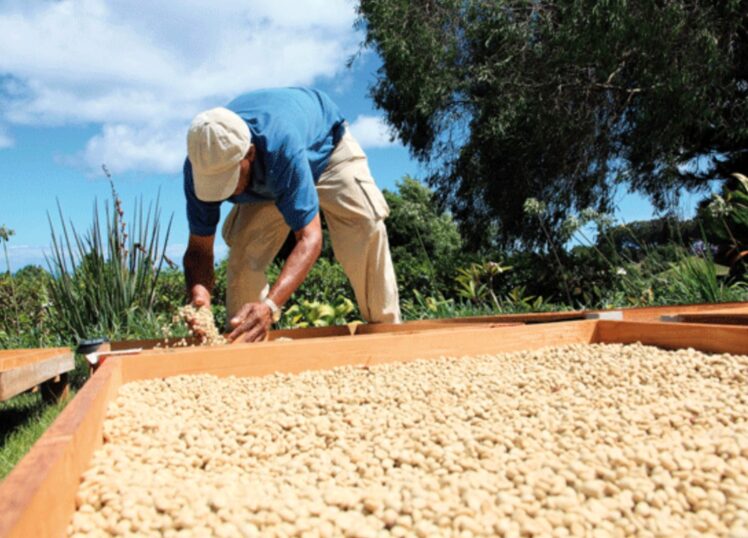
Coffee beans are first established on a shrub or tree known as a Coffea. It’s the seeds of these shrubs that are actually used as coffee beans to flavour our beverages and some foods.
They are generally harvested by hand, and the green ones are transported to a location where' they will be cleaned, ready for drying out.
They are cultivated in many different ways and stored with the intention of maintaining quality and freshness all the way to the end consumer.
The process is simple, but it can take a lot of time and effort to get the job done perfectly.
The Drying Period
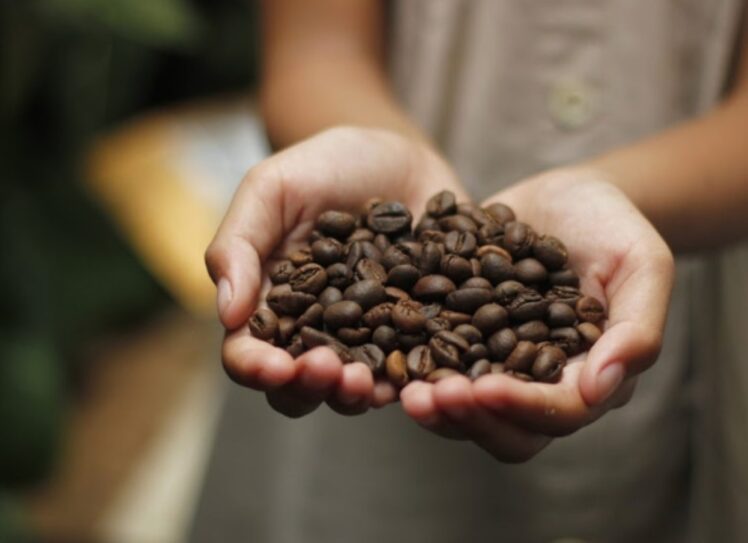
After cultivating, the beans are left to dry. Usually in the sun for a period of one week, which helps to form a parchment around the seed.
This parchment protects the bean while waiting to be graded.
After drying they are graded based on size, weight and whether they have defects or not, they are then packed in 60-70 KG sacks known as sisal or jute sacks. Sacks are used for their strength and breathability, they are also cheap and soft. Perfect for storage.
They remain in these sacks, stored until ready for transporting to the country of consumption.
However, this storage time should not exceed more than one year.
After a year, the stock gets labelled as an old crop and loses a lot of value because of that. Most farmers can’t afford to have their quality crops reduced in value this much.
Transportation
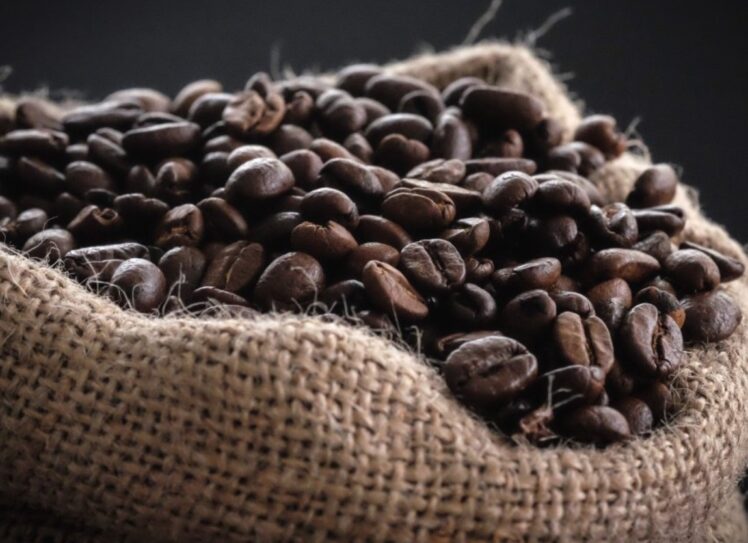
The green coffee beans are transported in their jute or sisal bags. Some coffees, for example those coming from Mexico, are known to be shipped in a sisal outer bag with a plastic inner bag.
Woven plastic bags, that are designed to be air-permeable, so they have no negative effects on the quality of the coffee, are sometimes used to ship coffees from West Africa.
The most common means of transport is first by ship, then by rail-road or trucks to their final destinations.
Many countries, like the UK, have coffee roasters situated by shipping ports for easy access to the shipped products.
This leads on to explaining how coffee is stored in the roasters, also commonly known as ‘the roasting house’.
In the roasters – Before Roasting
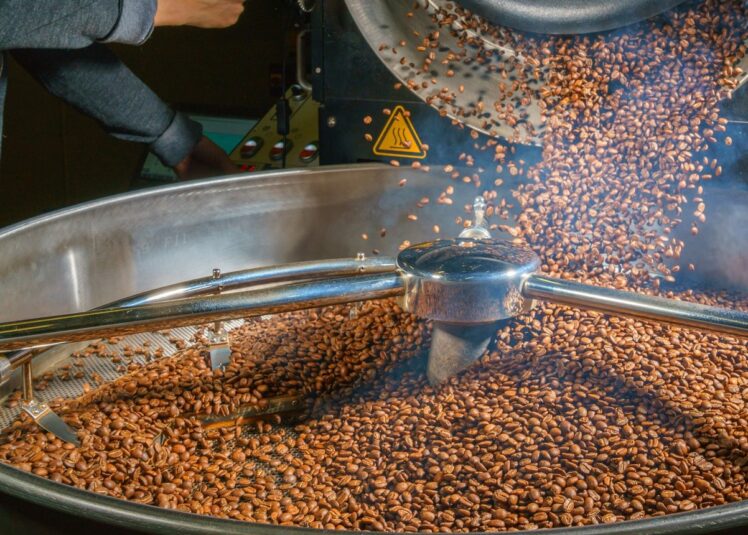
The goods arrive well packed, still needing to breathe, in their jute or sisal sacks and are stored in the roasting house, often on pallets, until they’re ready to be roasted.
Most companies will aim to roast the beans as soon as possible so they are fresh upon arrival to the end customer. They are usually roasted fresh to order too, especially for wholesale customers.
In the Roasters – after Roasting
Once the head roaster is happy with the result from the roasting machine, the beans immediately travel to a cooling tray to stop the roasting process. Gasses continue to be released during this time.
Wholesale & retail Packaging
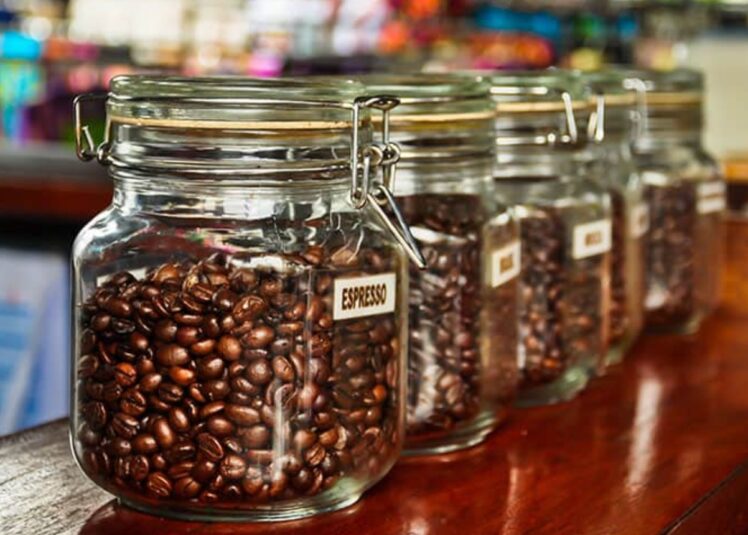
The most common size of packaging for wholesale is 1KG.
To sell more products directly to consumers though, some roasters will pack their finished beans into 227g (1 lb) or 500g bags.
Smaller Packaging used after roasting has a valve on the back of it. Gases that are released during the roasting process continue to be released through the valve for a minimum of 24 hours.
This valve helps with letting air out but not in. Meaning the quality and freshness is preserved right until it reaches the customer.
Blending the beans
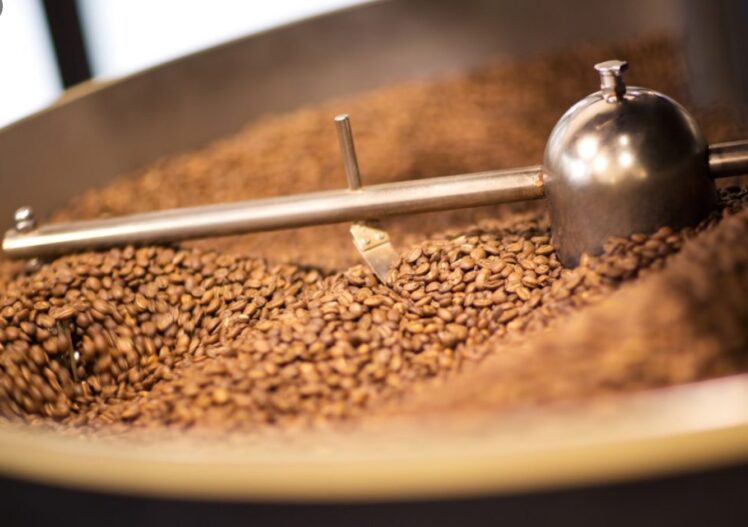
Beans from different countries can be blended together when packaged after roasting to give a unique flavour. This also allows companies to make their own blends, often described as a ‘signature blend’.
On the other hand, there are also products known as either single origin – meaning beans are packaged together from the same country but may have been cultivated on different farms in that country.
The more expensive coffees are known as single plantations. Where you will only find coffee that has been cultivated from a single farm (or plantation) and therefore a single country, packaged and stored together.
Roasters will usually make their finished products available to buy in both whole beans and pre-ground. Some let you choose which brewing method you want the beans ground for. All roasters will tell you that if you want the freshest, you should buy (and store as) whole beans.
Home Storage
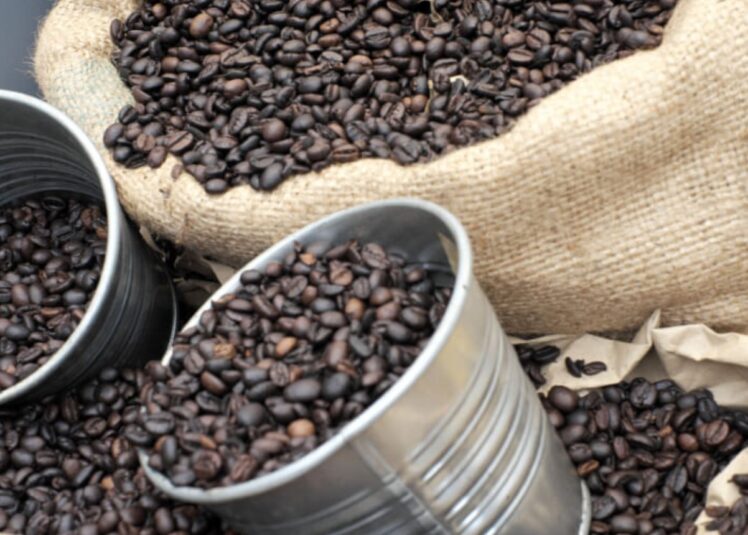
Before opening your freshly roasted & packaged coffee, you should store them at room temperature. Once opened, they should be transferred to an air-tight container. Keep the storage location away from the oven.
Roasted beans start losing their freshness immediately after roasting and when the gases have been released. It’s therefore a good idea to buy smaller batches more regularly.
When buying pre-ground coffee, it’s even more important to use an air-tight container when storing because as soon as they are ground, they are exposed to much more oxygen, which can significantly reduce the freshness.
The recommendation is to only grind as much coffee needed at the time of brewing and to avoid storing the grounds.
It’s not recommended to store roasted beans for longer than 3 months as they will start to taste bitter, significantly reducing the quality of the final cup.
Storing green beans at home
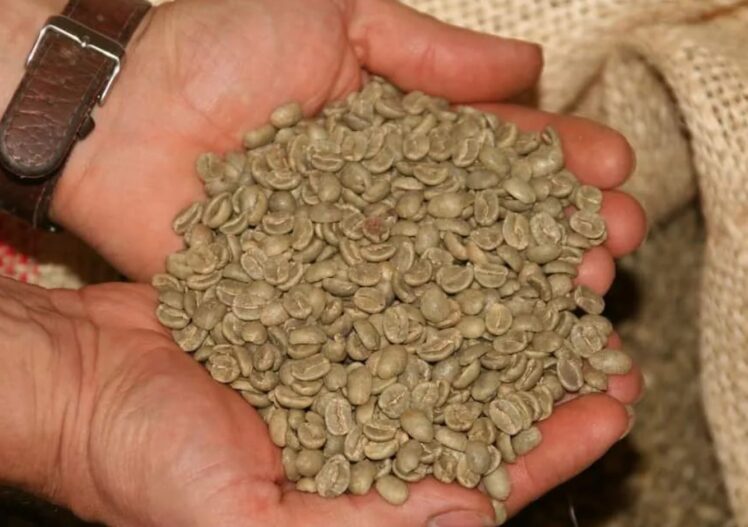
It doesn’t get much fresher than roasting your own coffee at home. You can store green beans for up to 12 months if they are stored properly.
For the freshest possible outcome, only roast the amount you are going to consume that day. In storage, segregate them from other foods. Store in a cool -environment that isn’t exposed to too much light.
Be aware of when the beans were harvested as this might need to be taken off the storage time. For example, if they were cultivated 3 months ago, you have about 9 months left of storage.
Some sources suggest you can store them for 3-5 years. Some experts say they lose their essential oils over time, so the best way is to test each batch when roasting and roast according to your preferences.
In Summary
The correct storage of coffee all the way from the farm, into the roasters and even at home is essential to achieving the quality and freshness of the brew we’ve come to know and love.
If you’re buying for consumption at home, be sure to ask questions of your supplier to find out when they were cultivated, how long each batch has been in the roaster, both unroasted and roasted, and how long they recommend you keep them at home for.
Aim to buy whole beans and grind them yourself if you want to be drinking the best possible cup of coffee.
Share With Your Friends